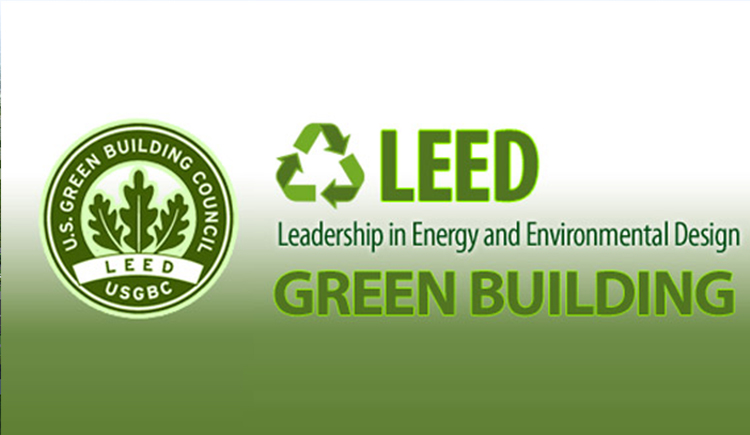
Slate Roofing Guide To Leed Certification

Leadership in Energy and Environmental Design, is the most widely used green building rating system in the world. Available for virtually all building, community and home project types, LEED provides a framework to create healthy, highly efficient and cost-saving green buildings. LEED certification is a globally recognized symbol of sustainability.
LEED V4 CONSISTS OF THE FOLLOWING 9 CREDIT CATEGORIES:
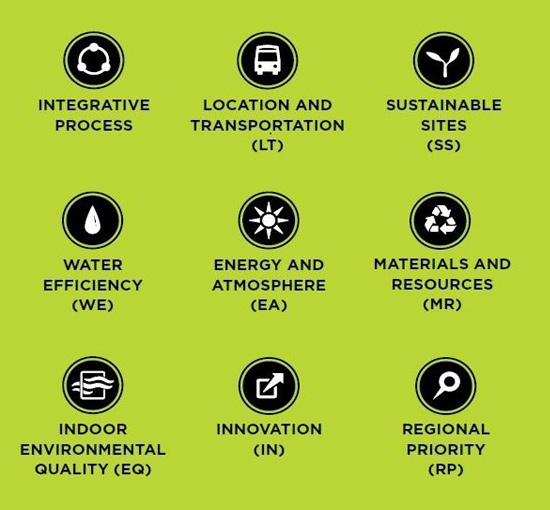
LEED v4 Building Design and Construction (BD+C)
Used for new construction or major renovation projects for the following building types: Core and Shell, Data Centers, Healthcare, Hospitality, New-Construction, Retail, Schools and Warehouse & Distribution Centers. (Note Homes and Multifamily Low-rise and Multifamily Midrise are organized differently with some additional categories to the above building types).

Certification Levels
| Certified | 40-49 points |
| Silver | 50-59 points |
| Gold | 60-79 points |
| Platinum | 80-110 points |
Points by Category
| Integrative Process | 1 point |
| Location and Transportation | 16 points |
| Sustainable Sites | 10 points |
| Water Efficiency | 11 points |
| Energy and Atmosphere | 33 points |
| Materials and Resources | 13 points |
| Idoor Environmental Quality | 16 points |
| Innovation | 6 points |
| Regional Priority | 4 points |
| 110 points |
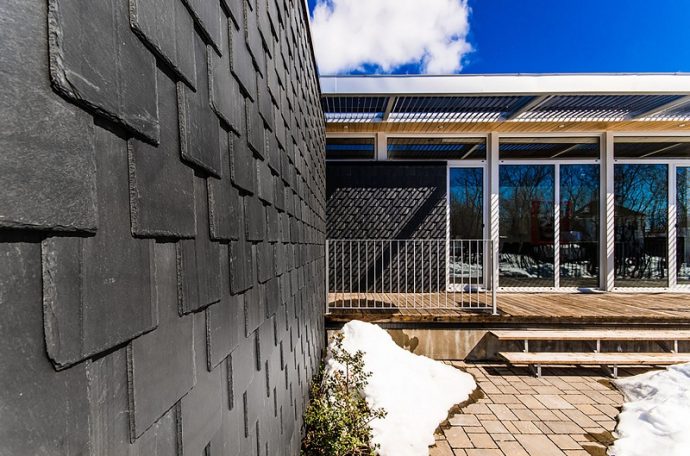
In accordance with the National Roofing Contractors Association (NRCA) Roofing-related Provisions, points under LEED v4 BD+C can be found in 7 of the 9 credit categories:
Sustainable Sites (SS)
Rainwater Management (1-3 points)
Intent
To reduce runoff volume and improve water quality by replicating the natural hydrology and water balance of the site, based on historical conditions and undeveloped ecosystems in the region.
Heat Island Reduction (1-2 points)
Intent
To minimize effects on microclimates and human and wildlife habitats by reducing heat islands.
Water Efficiency (WE)
Outdoor Water Use Reduction (1-2 points)
Intent
To reduce outdoor water consumption.
Energy and Atmosphere (EA)
Enhanced Commissioning (2-6 points)
Intent
To further support the design, construction, and eventual operation of a project that meets the owner’s project requirements for energy, water, indoor environmental quality, and durability.
Optimize Energy Performance (1-20 points)
Intent
To achieve increasing levels of energy performance beyond the prerequisite standard to reduce environmental and economic harms associated with excessive energy use.
Renewable Energy Production (1-3 points)
Intent
To reduce the environmental and economic harms associated with fossil fuel energy by increasing self-supply of renewable energy.
Materials and Resources (MR)
Building Product Disclosure and Optimization – Environmental Product Declarations (1-2 points)
Intent
To encourage the use of products and materials for which life-cycle information is available and that have environmentally, economically, and socially preferable life-cycle impacts. To reward project teams for selecting products from manufacturers who have verified improved environmental life-cycle impacts.
Note – Credits often apply when a detailed information report (i.e. – Environmental Product Declaration) is available.
Building Product Disclosure and Optimization – Sourcing of Raw Materials (1-2 points)
Intent
To encourage the use of products and materials for which life cycle information is available and that have environmentally, economically, and socially preferable life cycle impacts. To reward project teams for selecting products verified to have been extracted or sourced in a responsible manner.
Note – Credits often apply when a detailed information report (i.e. – Corporate Sustainability Report) is available.
Building Product Disclosure and Optimization – Material Ingredients (1-2 points)
Intent
To encourage the use of products and materials for which life-cycle information is available and that have environmentally, economically, and socially preferable life-cycle impacts. To reward project teams for selecting products for which the chemical ingredients in the product are inventoried using an accepted methodology and for selecting products verified to minimize the use and generation of harmful substances. To reward raw material manufacturers who produce products verified to have improved life-cycle impacts.
Construction and Demolition Waste Management (1-2 points)
Intent
To reduce construction and demolition waste disposed of in landfills and incineration facilities by recovering, reusing, and recycling materials.
Indoor Environmental Quality (EQ)
Low-Emitting Materials (1-3 points)
Intent
To reduce concentrations of chemical contaminants that can damage air quality, human health, productivity, and the environment.
Construction Indoor Air Quality Management Plan (1 point)
Intent
To promote the well-being of construction workers and building occupants by minimizing indoor air quality problems associated with construction and renovation.
Daylighting (1-3 points)
Intent
To connect building occupants with the outdoors, reinforce circadian rhythms, and reduce the use of electrical lighting by introducing daylight into the space.
Innovation (IN)
Innovation (1-5 points)
Intent
To encourage projects to achieve exceptional or innovative performance.
Regional Priority (RP)
Regional Priority (1-4 points)
Intent
To provide an incentive for the achievement of credits that address geographically specific environmental, social equity, and public health priorities.
LEED v4 Homes
LEED v4 Homes rating system was developed in addition to Building Design and Construction for low-rise (one to three stories) residential buildings and multifamily, midrise (four to eight stories) residential buildings.
The Home Rating System is made up of the following categories:
- Innovation and Design Process
- Location and Linkages
- Sustainable Sites
- Water Efficiency
- Energy and Atmosphere
- Materials and Resources
- Indoor Environmental Quality
- Awareness and Education
A mandatory Green Rater must be involved throughout the projects design and construction phase providing on-site verification services.
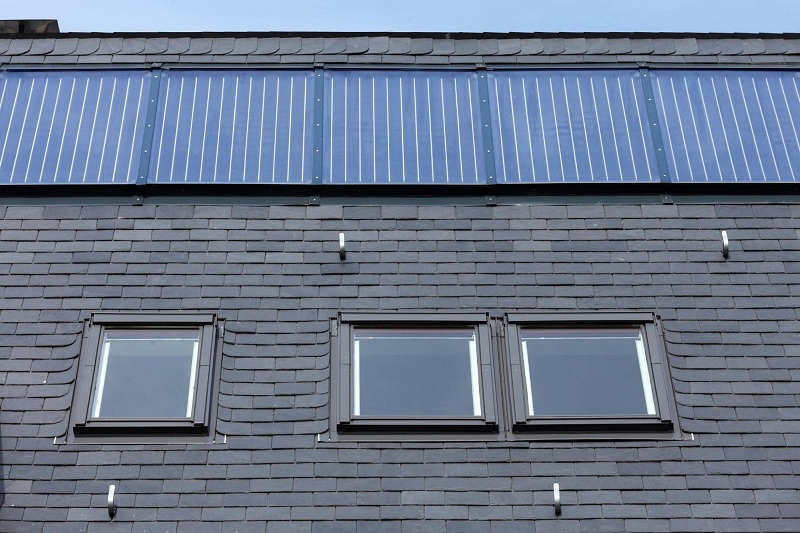
Slate Roofing Guide to LEED Building Opportunities
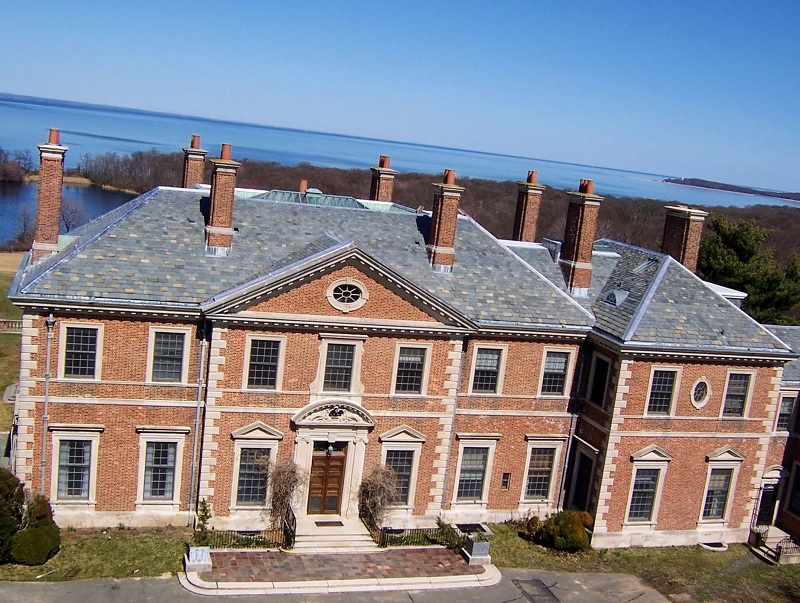
Architects, designers, general contractors, roofing contractors, custom builders and building owners complying with LEED certification for sustainable green building can achieve points when using our natural North Country Slate roofing products.
LEED v4 places significant emphasis on using a life cycle assessment (LCA) approach, as building products are assessed based on an entire life cycle, including raw materials and extraction, manufacture and use and disposal phases. With most roofing products being manufactured to last no more than 15-20 years, a natural slate roof life expectancy is in excess of 100 years. This diverts 5-6 times less petroleum-based roofing material waste from landfill sites, avoiding unnecessary time and expense associated with the dump-and-replace cycle.
The most environmentally friendly roof is the one that needs to be repaired and replaced the least. The higher the durability, the fewer resources are consumed.
In a day and age when governments, corporations and institutional campuses are aiming for zero-waste goals, it’s important to keep in mind that after an expectant service life of 100-150 years, natural slate shingles have the allure of being salvaged and reused again. Slate roofing shingles can also be repurposed into landscaping stone, construction aggregate, clean fill and artistic materials.
The LEED green building certification also focuses on the potential toxicity of building products ingredients. With most roofing products derived from petroleum-based ingredients and added chemicals these toxins emit harmful gas and volatile organic compounds (VOCs) into the air around you.
Slate is a fine-grained, metamorphic rock formed 500 million years ago, originally consisting of clay and shale. During geographical upheaval, extreme pressure and high temperatures created a mineralogical transformation to form slate. This occurrence by Mother Nature created a 100% all natural, green roofing product.
Although roofing can be a small percentage of the overall point system, roofing products play a significant role in sustainable building. Natural roofing slate continues to be at the forefront as an environmentally friendly, long lasting and cost-effective green building roofing material.
For further information or to answer any questions that you might have related to our products, your project or the slate roofing industry, please contact us.



